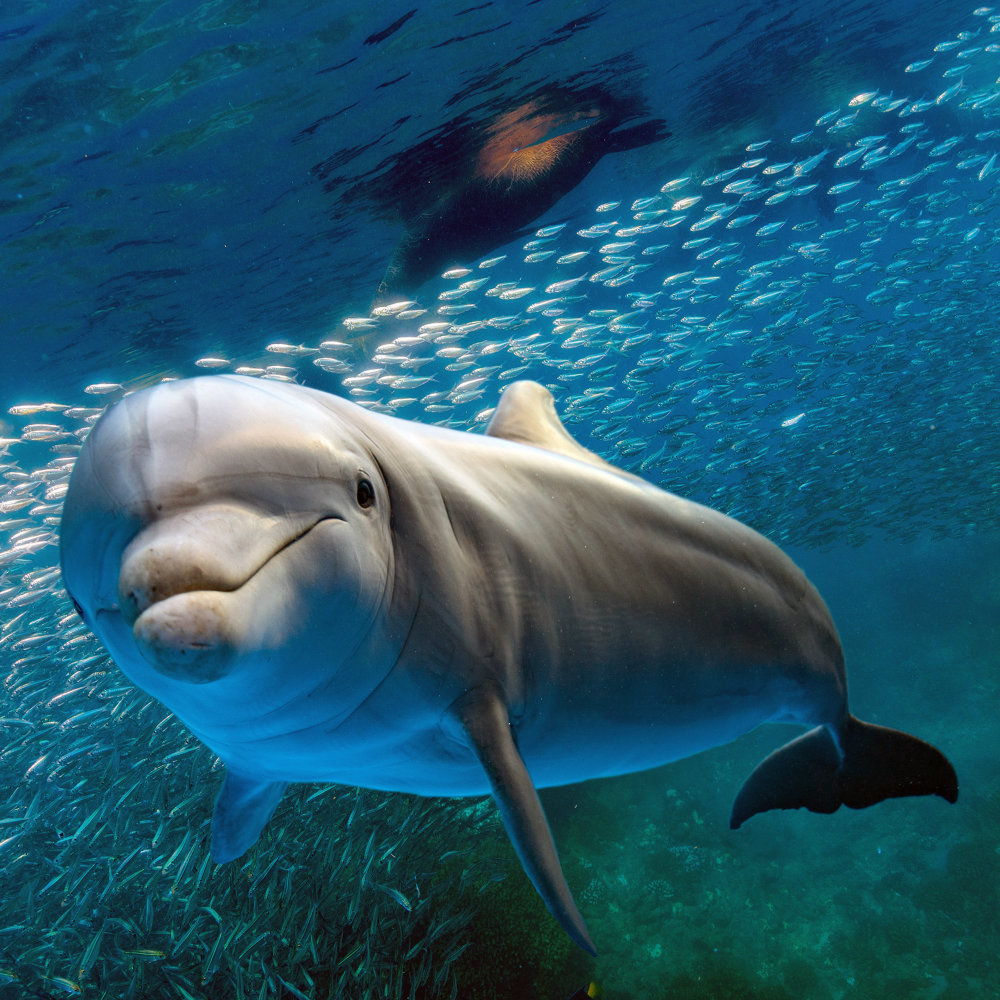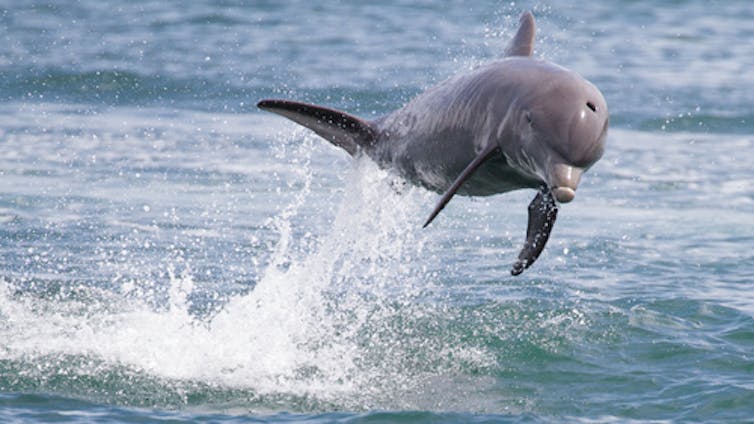
Two UF researchers who have found evidence that the same brain pathologies in dolphins are present in the brains of humans who have died with Alzheimer’s disease discuss what their studies suggest for a possible cure.

Maria Carolina Gallego-Iradi, University of Florida and David Borchelt, University of Florida
A team of scientists in the United Kingdom and the U.S. recently reported the discovery of pathological signs of Alzheimer’s disease in dolphins, animals whose brains are similar in many ways to those of humans.
This is the first time that these signs – neurofibrillary tangles and two kinds of protein clusters called plaques – have been discovered together in marine mammals. As neuroscience researchers, we believe this discovery has added significance because of the similarities between dolphin brains and human brains.
The new finding in dolphins supports the research team’s hypothesis that two factors conspire to raise the risk of developing Alzheimer’s disease in dolphins.
Those factors are: longevity with a long post-fertility life span – that is, a species living, on average, many years after the child-bearing years are over – and insulin signaling.
Gallego-Iradi, one of the authors of the paper, began the study on the dolphins’ brains more than a decade ago on the shores of Spain. It took several more years for other researchers to establish the connection between metabolic dysfunction and insulin resistance in dolphins and humans. This recent study also did that.
Together, the insight into the similarities between dolphins and humans has led us to hypothesize that Alzheimer’s and diabetes are diseases not of old age but of a long post-fertility life span.
Alzheimer’s is a progressive brain disease that leads to memory loss and changes in cognitive ability. There is no cure, and the disease ultimately leads to death.
It is hard to overstate the burden of the disease, both on those who are diagnosed with it and their families. It is the sixth-leading cause of death in the U.S. Deaths from the disease in the U.S. rose 55 percent from 1999 to 2014.
Alzheimer’s disease has two major pathological hallmarks: The development of clusters of a protein called beta-amyloid outside the cells and tangles of another protein called tau inside the cell.
The protein clusters outside the cells are called senile plaques. The tangles inside are called neurofibrillary tangles.
We saw both of these in the brains of the deceased dolphins.
Dolphins belong to an order of mammals called cetaceans that have adapted to live in the water.
Although dolphins live in water and humans live on Earth, dolphins and humans are very much alike in some key ways. In the last 50-60 million years, the brains of dolphins and other cetaceans, including porpoises and whales, have hyperexpanded. So have human brains. This is a process called enchephalization.
Also, as do humans, dolphins have a highly evolved brain development and a very complex social relationship. This brain similarity with humans suggests the possibility that dolphins, as humans, have developed similar molecular machineries and pathological characteristics, including similar neurodegenerative diseases.
And, cetaceans and humans live long. This is important, as longevity is one of the most relevant factors in neurodegenerative diseases. Cetaceans have longevity ranges between 20-100 years, which is enough time to develop brain amyloid deposits.
Some aspects of Alzheimer’s pathology have been reported in a wide range of other animals. Our evolutionary relatives, such as apes and monkeys, and our pets, dogs and cats, develop one of the pathologies, the amyloid pathology. Amyloid plaques also have been described in captive wild animals such as bears.
But to see both plaques and tangles in another species is rare.
We believe this makes our findings in dolphins of both neuritic plaque and tangle pathology in dolphins all the more remarkable.
Cetaceans become stranded many times each year all over the world. This stranding generates alarm, and scientists study to understand why it happens. Some of the factors include poor water quality; animals living in very deep water who detect the shore too late; unbalance and confusion created by Earth’s magnetic field changes; contamination by heavy metals such as mercury, cadmium or zinc; or contamination by compounds such as PCBs and DDTs. Other possible causes are viruses and parasites, traumatic death, predation or fishing mutilation, or ship sonars interfering with animal echolocation.
Dolphins stranded in Spain between 2003 and 2006 led to Gallego Iradi’s findings about the Alzheimer’s pathology.
The samples represented three different species of dolphins (bottlenose, striped and Risso’s) stranded on the coasts of Spain. Their brains all had the same twisted strands and protein clusters in their brain as human patients with Alzheimer’s disease. They also had neuronal loss, strengthening the idea that dolphins and humans could have the same Alzheimer’s pathology.
Years after those findings, other scientists began to explore a possible connection between a failure in insulin signaling and Alzheimer’s.
Humans, at some point in our evolutionary history, acquired a trait along the insulin signaling pathway. They do not imply that insulin signaling affects only longevity, that the effects of insulin signaling on metabolism, longevity and dementia are necessarily mediated through a single mechanism and even that defects in insulin-like growth factor signaling inevitably result in dementia.
Dr. Simon Lovestone at the University of Oxford and Dr. Frank Gunn-Moore at the University of Saint Andrews began to develop a hypothesis that this failure in insulin signaling in humans, related to post-fertility longevity, could be a cause of Alzheimer’s in humans.
And here’s another connection.
Cetaceans are uniquely prone to a prediabetes state and are one of the few animals, other than humans, with a naturally long post-fertility life span.
![]() We postulated a linked mechanism that led us to hypothesize that animals with a long post-fertility lifespan would be at risk for both insulin resistance and Alzheimer’s. This hypothesis led us to the prediction that cetaceans and other animals with unusual longevity would be at risk for both insulin resistance and would have Alzheimers’ pathology – a prediction for which we have provided some proof in our recent article.
We postulated a linked mechanism that led us to hypothesize that animals with a long post-fertility lifespan would be at risk for both insulin resistance and Alzheimer’s. This hypothesis led us to the prediction that cetaceans and other animals with unusual longevity would be at risk for both insulin resistance and would have Alzheimers’ pathology – a prediction for which we have provided some proof in our recent article.
Maria Carolina Gallego-Iradi, Assistant Scientist, University of Florida and David Borchelt, Professor, Neuroscience, University of Florida
This article was originally published on The Conversation. Read the original article.